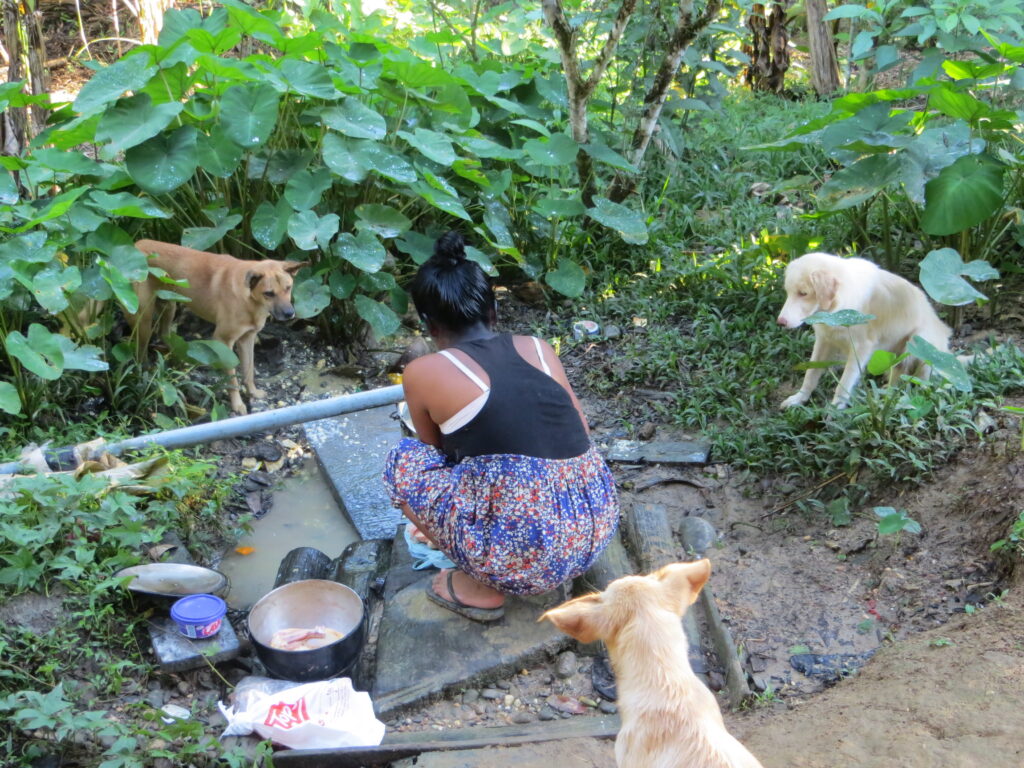RESEARCH

All these selves are dangerous and we make relations with them

“With ayahuasca, you can look out at that mountain and see that it is densely populated with beings: supays, animals, family, your grandparents.”
– Felix Santi

Through the lens of perspectivism, nonhuman beings share the same culture as humans such as hunting and gathering, eating and drinking, and squabbling and social organization, while their ‘natures’, i.e. bodies, affects, dispositions, or habitus, are variable and differentially specific. Crucially, from their perspective nonhuman beings experience and understand themselves as selves: “What to us is blood, is maize beer to the jaguar; what to the souls of the dead is a rotting corpse, to us is soaking manioc; what we see as a muddy waterhole, the tapirs see as a great ceremonial house” (Viveiros de Castro 1998:478). The key takeaway is that nonhuman beings thus live in their own specific embodied ways, from their perspective imbued with sociality, intentionality, and selfhood. However, Viveiros de Castro articulates the nonhumans who inhabit this way of being with the term ‘persons’, and even goes as far as to claim as ‘humans’ (human as understood by humans and according to human metrics). In trying to summon the profound perceptual and agential powers and impact of nonhuman livelihoods and give them as equal weight as humans Viveiros de Castro ultimately dilutes the ontological innovation of his argument with terms that signal a human centric metric of evaluation.
Retaining the profound insight of perspectivism’s embodied sociality, I use the term ‘selves’ to articulate a nonhuman being with intelligence, intentionality and subjectivity who participates in a relational semiotic schema[i]. The salient matter is how nonhuman beings’ mechanisms and attendant constraints in apprehending the world, i.e. reality, through sensory and cognitive faculties bind them in relation to all of the other beings that compose the world. This is where Viveiros de Castro’s emphasis on bodily disposition and habitus is crucial to understanding how a being interfaces with reality, and thus how a being encounters other selves. The bodily assemblage as a locus of apprehending reality includes biological and cognitive instruments that function together as a network. These perceptual centers are not independent nor disconnected from each other or the environment in which they perceive, but function in tandem as a self moves through the environment (Ingold 2000). Of key importance is how these systems of apprehending reality are necessarily filtered; sensory gating and selective attention constrain and determine what information enters and consequently how this information is interpreted both consciously and subconsciously by the subject.
As a self moves through its environment, apprehending the world, it simultaneously exists as the object of other selves’ sensing and interpreting. That particular environment, and consequentially the world itself, is composed of myriad selves sensing, perceiving, and responding to each other through an intersubjective biosemiotic network (Kockelman 2017). Concurrently, selves come into being through their biosemiotics relations (Kohn 2013). From such a worlding perspective, Amazonian Quichua statements that claim their local environment to be densely populated with selves ring true and do not inherently contradict the ways western science posits the world[iii].
Note:
[iii] Western scientific ontological assumptions of nature and the environment are frequently represented as singular, monolithic, and resilient to change. However, understandings and representations of nature have changed throughout the centuries depending on how groups of people engage with their environment. Urbanization and the attendant construction of wilderness areas particularly has shaped human notions of nature, yet consistently people discursively violate said notions in their specific practices with nature, including communion and treating plants and animals beyond pets and as family, in similar ways that Bobonaza Quichuas do.